AMD Teases Radeon RX 480: Launching June 29th For $199
by Ryan Smith on May 31, 2016 10:00 PM EST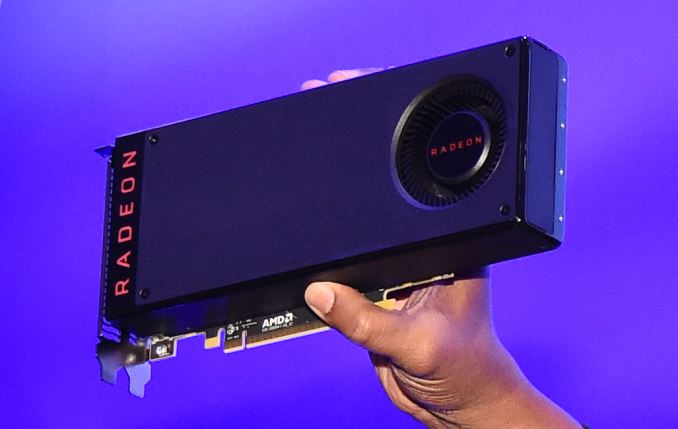
Kicking off at this moment is AMD’s Computex 2016 keynote. The company has multiple announcements scheduled this evening, but we’re going to jump right into an area that has been of extreme interest for many of our readers: GPUs.
Ahead of this evening’s event, AMD sent out an email to the press teasing the first of their discrete Polaris architecture based cards. Called the Radeon RX 480, AMD has unveiled much of the product’s specifications, but also its price and availability. When the card hits the streets on June 29th, it will be starting at the crucial mainstream battleground price point of $199.
| AMD Radeon GPU Specification Comparison | ||||||
| AMD Radeon RX 480 | AMD Radeon R9 390X | AMD Radeon R9 390 | AMD Radeon R9 380 | |||
| Stream Processors | 2304 (36 CUs) |
2816 (44 CUs) |
2560 (40 CUs) |
1792 (28 CUs) |
||
| Texture Units | (Many) | 176 | 160 | 112 | ||
| ROPs | (A Positive Integer) | 64 | 64 | 32 | ||
| TFLOPs (FMA) | >5 TFLOPs | 5.9 TFLOPs | 5.1 TFLOPs | 3.5 TFLOPs | ||
| Boost Clock | >1.08GHz | 1050MHz | 1000MHz | 970MHz | ||
| Memory Clock | 8Gbps GDDR5 | 5Gbps GDDR5 | 5Gbps GDDR5 | 5.5Gbps GDDR5 | ||
| Memory Bus Width | 256-bit | 512-bit | 512-bit | 256-bit | ||
| VRAM | 4GB/8GB | 8GB | 8GB | 2GB | ||
| Transistor Count | ? | 6.2B | 6.2B | 5.0B | ||
| Typical Board Power | 150W | 275W | 275W | 190W | ||
| Manufacturing Process | GloFo 14nm FinFET | TSMC 28nm | TSMC 28nm | TSMC 28nm | ||
| Architecture | GCN 4 | GCN 1.1 | GCN 1.1 | GCN 1.2 | ||
| GPU | Polaris 10? | Hawaii | Hawaii | Tonga | ||
| Launch Date | 06/29/16 | 06/18/15 | 06/18/15 | 06/18/15 | ||
| Launch Price | $199 | $429 | $329 | $199 | ||
First off, the RX 480 will include 36 CUs. If we assume 64 stream processors to a CU – the GCN standard – then this brings us to 2304 SPs. AMD has not named the specific Polaris GPU being used here, but given the CU count I believe it’s reasonable to assume that this is a Polaris 10 SKU, as I’ve already seen Polaris 11 and it’s a very small chip better suited for notebooks.
AMD also revealed that the card would offer over 5 TFLOPs of compute performance. Given what we know about the CU count, this allows us to estimate the GPU clockspeed. This puts the lower bound of the GPU clockspeed at 1.08GHz and an upper bound (6 TFLOPs) at 1.3GHz, which would be in the range of 10-30% higher clocked than comparable Radeon 300 series cards.
In terms of raw numbers this puts the RX 480 just shy of the current Radeon R9 390. However it also doesn’t take into account the fact that one of the major focuses for Polaris will be in improving architectural efficiency. I would certainly expect that even at the lower end of clockspeed estimates, RX 480 could pull ahead of the R9 390, in which case we’re looking at a part that would deliver performance between the R9 390 and R9 390X, with final clockspeeds and architectural efficiency settling just how close to R9 390X the new card gets.
On the memory front the card is equipped with 8Gbps GDDR5, running along a 256-bit memory bus. This is the typical bus width for AMD x80-series cards, and the high clocked 8Gbps GDDR5 means that we’re looking at a total of 256GB/sec of memory bandwidth to feed the RX 480’s GPU. AMD’s partners will be offering both 4GB and 8GB cards, and for the purposes of this teaser I assume that pricing information will be for the 4GB card, with 8GB serving as a premium option.
Finally, AMD has also revealed the TDP for the RX 480, stating that it will be a 150W card. As Polaris is built on 14nm FinFET, we’re seeing first-hand the benefits of finally making the long-awaited jump off of 28nm, as this means we’re looking at Radeon R9 390 series performance in a card that, on paper, consumes only a bit more than half the power. This also puts the RX 480 right in the sweet spot for mainstream cards, as 150W has traditionally struck a good balance between performance and power consumption that allows for a fast card that doesn’t require aggressive cooling, and is more compatible with OEM computer vendor case & cooling designs.
Cementing its place as a mainstream card, the RX 480 pricing will start at $199. This is an aggressive and heavily fought over price point that has traditionally defined the mainstream segment, attracting buyers who want great 1080p gaming performance that sub-$150 value cards can’t offer, without moving up to more expensive (and power hungry) $300+ cards. In this sense the RX 480 is a direct replacement for the R9 380, AMD’s Tonga-based card that hit the market roughly a year ago at the same price. Going by the raw numbers alone, RX 480 would be 40% (or more) faster than the R9 380.
Meanwhile I won’t speculate too much on the competitive market from a teaser, but it’s worth noting that this is nearly half the price of NVIDIA’s currently cheapest Pascal card, the GeForce GTX 1070. Interestingly both cards have the same 150W TDP, but looking at the throughput figures it does not look like RX 480 is meant to offer quite as high performance as NVIDIA’s card.
Moving on, along with teasing the RX 480’s specifications, AMD’s teaser also laid out their marketing plans for the card. We’re previously talked about how both Oculus and Valve/HTC were encouraging developers to treat VR like a fixed platform, and setting minimum hardware specifications to go along with that. On the AMD side those specifications called for a Radeon R9 290, which the RX 480 should be able to beat.
As a result AMD is planning on heavily promoting the VR aspects of the RX 480, as it brings the necessary performance down from a 250W, $300+ card to a 150W, $200 card. In fact AMD is claiming that VR performance will be closer to $500 video cards, in which case we’d be looking at performance closer to the Radeon R9 Nano, a Fiji based card.
With all of that said, the video card is just one component in the total price of a VR system – you still need the headset – but on the PC side it has also been the most expensive component. Consequently, AMD sees cheaper video cards that offer good VR performance as being important to bringing down the total price of a VR-ready system, and will be promoting the RX 480 as the prescription for entry-level VR needs. From a business perspective, AMD is ultimately expecting VR to be a fast-growing market, so the company wants to make sure they don’t miss out and have more VR-capable cards on the market as quickly as they can.
Along those lines, AMD’s release also makes note that at least one model will be “both HTC Vive Ready and Oculus Rift certified,” though no further details are being offered at this time. Whether this is just a certification matter or if there’s going to be something special about this model (e.g. connectors) is open to speculation.
Finally, now that they’ve revealed the price and much of the specifications of their first Polaris card, AMD is also releasing more details on their overall development and market positioning strategy with Polaris. As AMD has hinted at in the past, Polaris is being specifically developed for and aimed at the mainstream market. AMD wants to recapture lost market share – especially in laptops – and the large mainstream market is seen as the best way to do that. AMD is calling this their “water drop” strategy, and I expect we’ll hear a bit more about it tonight, including the meaning behind the name.
And with all of that said, it looks like we’re going to have a lot of AMD to talk about on June 29th. So until they, stay tuned.
Above: AMD SVP & Chief Architect Raja Koduri, Who Is Very Happy That Polaris Is About To Launch


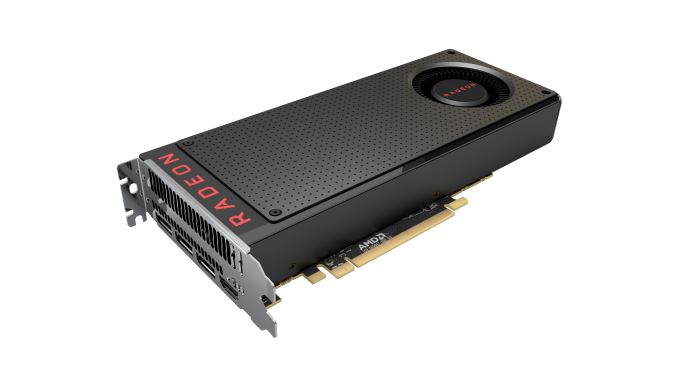

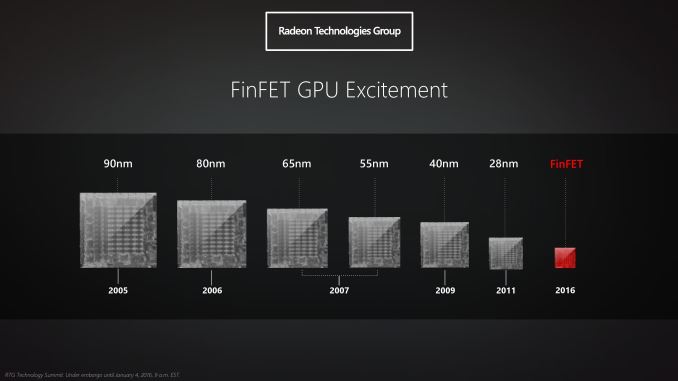
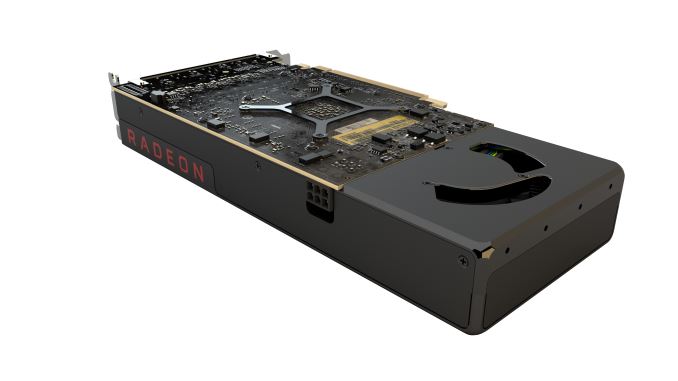




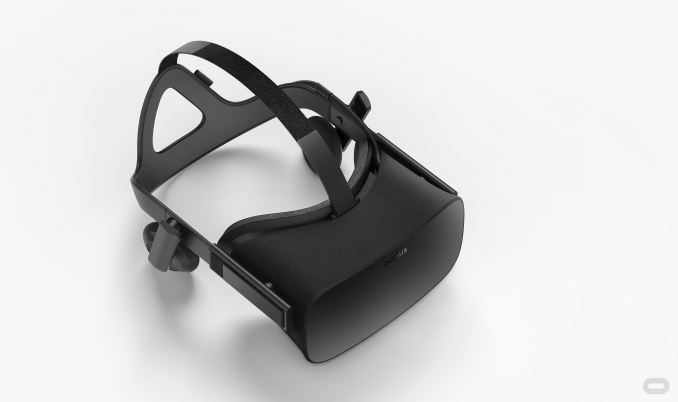









377 Comments
View All Comments
alfalfacat - Tuesday, May 31, 2016 - link
That's absolutely correct. The only thing faster gets you is an even stupidly higher resolution. The *VAST* majority of people never buy $500+ halo cards, and are perfectly fine with their gaming experiences.Yojimbo - Wednesday, June 1, 2016 - link
No it's not absolutely correct. Plenty of people buy cards for more than $200. The vast majority of people on this Earth don't buy any discrete GPUs at all, some of them game, and many of those are perfectly fine with their gaming experiences.There's still a market for cards costing more than $200 just as there was last year and the year before.
Jimster480 - Wednesday, June 1, 2016 - link
its true that it is under 10%, I help out alot on a site where people ask for builds. I would have to say that 85%+ of the builds are using a 380/960 and only some are using a 390~ and basically none are using a 980Ti or a FuryX.Yojimbo - Wednesday, June 1, 2016 - link
Under 10% of volume, yes, but not of revenue. And the gross margins of the lower priced parts are lower. But it's not even really my point. My point is that the market still exists. In fact with the previous generation of cards it grew. VR only puts more demands on performance, so the market for high end cards will probably still grow with this generation as well.The demand for more and more GPU computing power will be there for a long time, because there are still plenty of things for that power to be used for.
Meteor2 - Wednesday, June 1, 2016 - link
Steam says otherwise. Even when you calculate for revenue. Halo products really are just that. They basically advertise the rest of a manufacturer's range.tamalero - Wednesday, June 1, 2016 - link
halo technically are a niche, gaming community. not the global reach.Yojimbo - Wednesday, June 1, 2016 - link
Maybe you're thinking of the price of the graphics card, not the price of the GPU. The GTX 970 was a significant factor in NVIDIA's financial success the past year. You might also be looking at the steam survey and comparing the number of GTX 970s to the number of all the other graphics cards on the list, instead of thinking about what percentage of those cards were bought in the time since the GTX 970 was on the market.But in fact, if you look at the Steam survey it says the opposite of what you claim it says. The top card on the list is the GTX 970, with over 5% share. The GTX 980 has over 1%, the 980 Ti has 1%. That's over 7% on cards that still cost over $200 to this day, and it doesn't include any mobile offerings or any AMD cards, or integrated GPUs, which are included when figuring the percentages. It also doesn't include cards that cost over $200 when they were bought, like the 780. If we just look at DX12 cards, the 970 is at 7%, the 980 is 1.4% and the 980Ti is 1.3%. This is already almost 10%, and DX12 cards go all the way back to the 500 series, as well as including Intel 4000, 5000, and 6000 integrated graphics.
It's pretty clear that, going by the steam surveys, much more than 10% of all discrete graphics cards sold in the last year and used by steam users have cost the purchasers more than $200.
Jumangi - Wednesday, June 1, 2016 - link
10% is way overstating it. I'd bet Nvidia sells 50+ 960 GPU's for every 980 sold. Only a fraction buy in the 400+ range.Yojimbo - Wednesday, June 1, 2016 - link
The 970 is the big seller, and it is also more than $200. If you go by the steam surveys, there are a little over 3 GTX 960s for every GTX 980, and there are 5 GTX 970s for every GTX 980.Kvaern1 - Wednesday, June 1, 2016 - link
Define "even stupidly higher resolution".